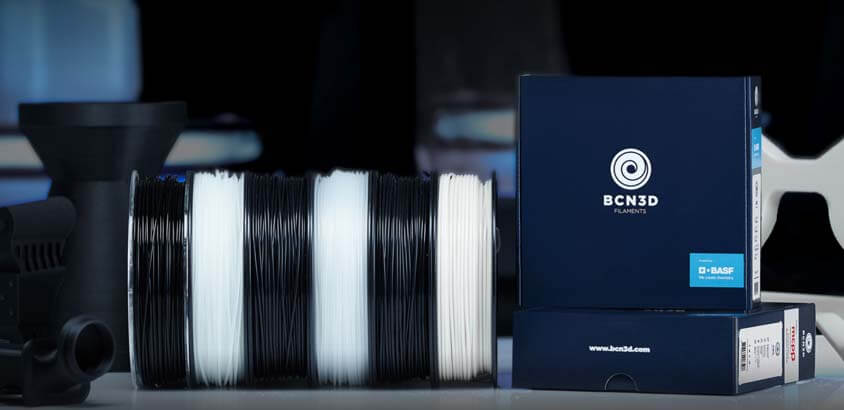After buying your first 3D printer, the first decision you will have to make is choosing the filament to use. Luckily, there are a dozen varieties of 3D printer filaments to choose from. If you have just bought your first 3D printer, you may be dismayed by the array of acronyms used to describe different filaments. They include HIPS, PLA, ABS, PETT, PVA, TPE, PCTPE, among others. But don’t be discouraged by the new terminologies. Do you want a tip? Take a look at BCN3D filaments, they are formulated to ensure the highest 3D print quality and covers the majority of the technical applications.

3D Printer Filament Basics
There are different types of materials used in 3D printing. However, 3D printing filaments are the commonest printing materials used by consumers today. The thread-like printing filaments are specifically made from polymers. Polymers are used in making 3D printing filaments because of their ability to melt rather than burn when heated.
The printing filament is subjected to intense heat inside the printer’s heating chamber where it melts. It’s then extruded via a moving nozzle to form a 3D object with height, length, and width. The process of creating objects using a 3D printer is known as Fused Deposition Modeling (FDM). 3D printing filaments are sold in reels by weight ranging from half a kilogram to two kilograms. Filaments also have a varying thickness ranging from 1.75 and 3 millimeters.
What Are the Popular 3D Printing Filaments in the Market Today?
As highlighted earlier, there are a dozen types of 3D printer filaments available in the market. Today, we will be looking more closely at two printing filaments: ABS and PLA.
ABS (acrylonitrile butadiene styrene) and PLA (polylactic acid) are the most popular printing filaments in the market today. These printing filaments appeal to most people because they are relatively inexpensive and easy to use. While ABS and PLA have some common characteristics, they differ.
Objects made from ABS are durable, sturdy, and non-toxic. ABS filaments have a high melting point with temperatures of up to 250 degrees. ABS makes consumer products, outdoor furniture, toys and other objects requiring high impact. ABS is petroleum-based, and hence it produces fumes when heated. It, therefore, requires proper ventilation when printing. While it has its setbacks, objects made from ABS are incredibly durable, sturdy, and reliable. These materials are used across multiple industries.
PLA, on the other hand, is derived from plant sources such as cornstarch, tapioca root, and sugarcane, making biodegradable plastic. When heated, PLA produces a sweet popcorn-like aroma. It has a lower melting point which makes it suitable for printing at lower temperatures. PLA filaments can be used in enclosed spaces without causing health risks.
With so many 3D printing filaments in the market, choosing the right filament may be daunting. These filaments cover the majority of the technical applications, which makes them an ideal choice for businesses. When choosing a filament for your 3D printer, don’t be afraid to experiment with the other filaments other than the ABS and PLA.

